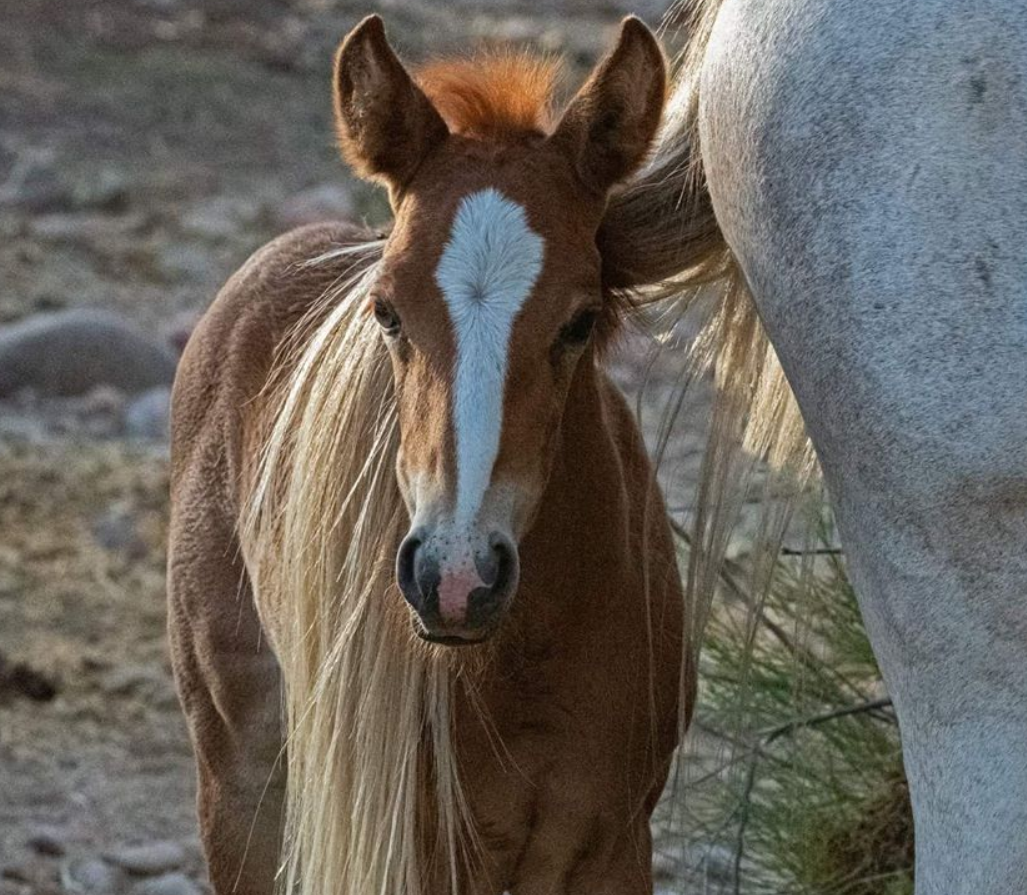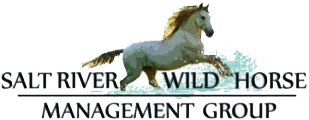
“Protected” – SRWHMG Status Report
In the last 5 years, the Salt River herd has grown an average of 11 to 12% of its total, per year. This is well documented by recording every death and every birth in the herd. Our documentation includes horses that have their home ranges on the SRPMIC and Frt McDowell reservations as well. We have a record of every horse that has ever visited the lower Salt River, including records of where they travel (their migrating patterns). We are very meticulous in our documenting, as that is the basis of saving the Salt River wild horses; it all starts with knowledge.
The growth is natural, and in a normal “wild” situation horses would fan out and expand to other areas. If they were hungry, they would migrate to greener areas. But this herd is fenced in by civilization on all sides, so they don’t have the freedom to do that. They do however have freedom to roam on approximately 22.000 acres of Forest Service lands and go anywhere they want to plus thousands more acres on the two reservations. We lose bands for months on end during the migrating season, but we don’t worry about them, because both reservations protect the horses as well.
The growth happened, because even while we submitted our management proposal 5 years ago, we were not authorized to start our birth control program until all of the procedures and the RFP (our contract with the State) fell into place.
The growth comes with it’s management challenges of course, and it is apparently very easy to blame SRWHMG for any and all things wild horse related.
However, we are steadfast in our concept and execution of humane management and we have proven to be able to handle any and all situations, so that this herd can continue to live wild and free for all of the public to enjoy. They live as they have historically lived, only now fenced in by civilization surrounded by the big metropolis of Phoenix, Arizona. They are not even 20 minutes from Sky Harbor International airport in the Tonto National Forest which in total, hosts approximately 6 million visitors per year (only second in number to the Grand Canyon) The horses are a big economic boon to this area.
A herd this popular, in an area this busy can seem like an impossible feat, but we are proving that it IS manageable, and at no cost to the government at that. It takes the support of AZDA, support of the public, and a little patience from the authorities… oh and let’s not forget, the hard work of 120 SRWHMG volunteers!
Management challenges that have been represented as reasons for removals:
- After saving the herd from roundup in 2015 and everyone was finally cooperating, it was the weather we could not get to cooperate. Two years of drought in a row proved to be very time and resource intensive, but also proved that nomatter what, SRWHMG can and will keep the entire Salt River herd healthy.
- Bush Hwy, once a rickety old road, became a smoothly paved Highway with guardrails, which killed 18 horses in 2018, compared to an average of 7 to 8 in most years prior.
We worked hard with MCDOT towards more safety improvements like the Three-way stop, which used to be the deadliest horse crossing and is now the safest. We also started a new SRWHMG department: Our Road Patrol.
The issues are not solved, but getting better. After many improvements, we had 6 months of no accidents on Bush Hwy! Sadly that streak ended this month and we are currently at 5 dead horses and 2 dead foals total for the year 2019, plus two lucky horses who survived. We are currently patiently awaiting fencing at Granite Reef and permanent speed feedback signs and message boards from MCDOT. MCSO is also doing a great job increasing speed reinforcements. Of course there is still only one way to mitigate this problem forever, and that would be an overpass or underpass at Coon Bluff, however that would take a lot of time and a LOT of money. - It has been exactly one year from the start of our PZP program. When we started last October, all of the 2019 foals were already in the making. We have had a healthy foal crop this year. In 2020 you will be able to see a big difference in the amount of foals. With the high natural attrition (death) rate of 10% of the herd per year, we will see a steady reduction in herd size slowly, surely and humanely. We have asked for 5 years to prove it; the same amount of years that we were not allowed to implement our plans. While reducing herd size we will always monitor for genetic viability.
This year we have rescued 3 orphans, euthanized 10 suffering horses humanely, responded to 25 emergent horse situations, relocated 46 horses and we have monitored and taken special care of 29 horses with natural injuries. We have fixed 36 fence breaks, installed 4 new hikers gates and removed almost a mile of downed old fencing across the river. We have monitored horses with strangles, and placed warning signs about the disease. We have provided 24/7 care and sanctuary and family for our rescues at our sanctuary on Hwy 87.
On top of it all we have kept you the public informed of as much as we possibly can, and you have faithfully stood by us and provided the funding for all of it.
Together with our coalition partner the American Wild Horse Campaign (AWHC), we are steadfast and still believe in the same things. We work hard so that every Salt River wild horse can live it’s life wild and free for all of the public to enjoy.
The Salt River wild horses are protected from slaughter and harassment, by the Salt River horse Act. However no where in the Act does it say they are protected from removal. THAT is why we work so hard. THAT is why we need your continuous support.
Keeping them wild and free,
SRWHMG.
Photo by SRWHMG Rick Blandford
